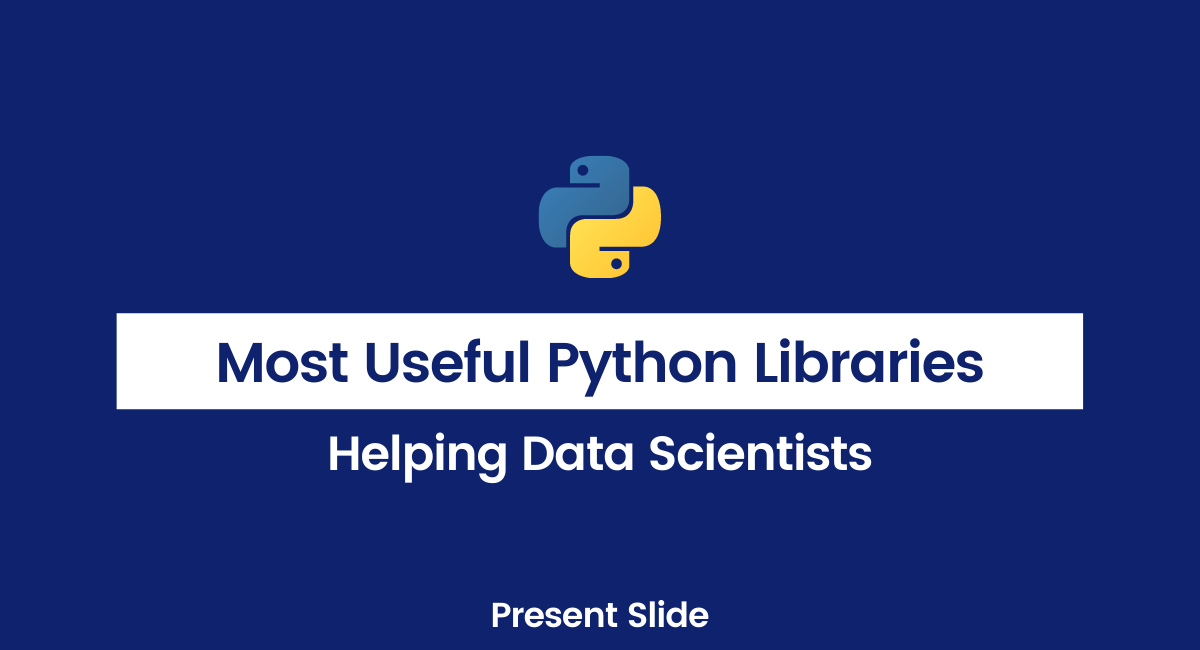When it comes to programming, we usually find ourselves connecting it with Python. The reasons are obvious as it is one of the most popular programming languages at present.
Python is an easy to learn programming language with strong data handling ability. Having so many libraries for every single task it is easy to create robust functions. The main thing that makes Python an amazing language is its use in the field of Data Science.
Python language is used to handle data, clean data, visualize data, and for a lot more data operations. The language does have libraries for handling tons of data and bringing out useful information from it.
In this article, we will be looking at the most useful Python Libraries for Data Scientists. If you are new to the field or you want to learn Data Science then you can have a look at our free Data Science courses list.
Let us get started with the list:
1. Numpy Package
While learning Python, the first library you will come across is Numpy. It is used for handling large and multidimensional arrays. It also helps in performing various mathematical functions on the arrays as well as matrices.
The most basic and effective package for scientific and mathematical computation on data. Even a large dataset could be easily handled with the help of the Numpy library as it allows creating an n-dimensional array of data elements.
2. Pandas
Mostly referred to as Python Data Analysis Library and is very much useful in framing data. The library allows you in defining data structures while importing the dataset. You can also analyze data with the help of the Pandas library.
The main data structure with this library is DataFrame with which you can easily store data in the form of tables. These tables can be further managed over rows and columns. It has multiple functions like reading and writes associated with files including CSV, SQL, and other tabular data formats.
3. SciPy
Based on the Numpy library and is used for extended features of the same. Scientific computation can be easily performed by the SciPy library. It has a multidimensional array as its basic structure and all the functions are carried out on it.
The library has got all the tools for handling the tasks about probability, linear algebra, calculus, and many other problems. Further routines help in solving integration and optimization problems.
4. Matplotlib
Python provides all the necessary tools needed for a Data Scientist. Matplotlib is one of the popular tools used by Data Scientists around the globe.
Matplotlib allows the user to plot a 2D graph based on the data and functions. It helps in visualizing the data in the form of Bar graphs, Histograms, Scatter plots, and a lot more types of graphs. Visual form data is much more appealing and helps define a certain categorical pattern of given data.
5. Tensorflow
Tensorflow is a very popular library in the field of Machine Learning. The library is developed by Google Brain Developers and provides a way to train neural networks with the help of multiple data sets.
Tensorflow can be used to build applications like Object Identification, Recommendations Systems, Classification, etc. As the library is under Google development thus it gets all the new updates of language as well as platform faster.
6. PyTorch
If you are working on a Machine learning project with large data sets you might need this library. It is one of the most helpful libraries in building machine learning and deep learning algorithms. Users can avail of an API for computations related to Neural networks as well.
The library helps in performing faster tensor computation with GPU acceleration. You can also create dynamic computational graphs with the help of PyTorch. The deployment of every structure is based on a cloud-based environment which makes it portable as well as scalable.
7. Theano
Theano is another library provided by Python for helping Data Scientists. It is mainly used in optimizing, Evaluating, and Expressing general mathematical operations. These mainly include operations based on multidimensional arrays and matrices.
The computations are based on Numpy and thus they can be processed on GPU as well as CPU efficiently. This way Data Scientists can manage both distributed and parallel computations.
8. Keras
Keras is a highly used Python library built to be working with Deep Neural Networks. The library could run on top of other base libraries including Tensorflow, Keras, and PlaidML.
The library provides an easy and efficient environment for API integrations. New models can be easily developed with the help of Keras’ already built functions. The execution suits best for both GPU and CPU listing. This way the base load for each API could be divided into multiple modules.
9. Scikit-learn
Scikit-learn is a Python library used to develop Machine Learning algorithms. The library is built over other base libraries such as Numpy, Matplotlib, and SciPy. It provides various classification, clustering, and regression algorithms to be used.
Major applications that could be built with Scikit-learn are Image recognition, Client segmentation, Spam detection, etc.
10. Bokeh
Based on the Matplotlib library and is used to design interactive graphs from the data. The library focuses more on the latest web browser and techniques they use to represent data.
Anyone can easily build plots, graphs, dashboards, and visual elements from large datasets. In addition to the normal looks that Matplotlib provides there are multiple other layouts and ways to represent data.
These were some of the Python libraries popular among Data Scientist. There are hundreds of other libraries as well and we have selected them according to our use and demand.
We hope you have liked the post, Do share it with your friends 🙂
